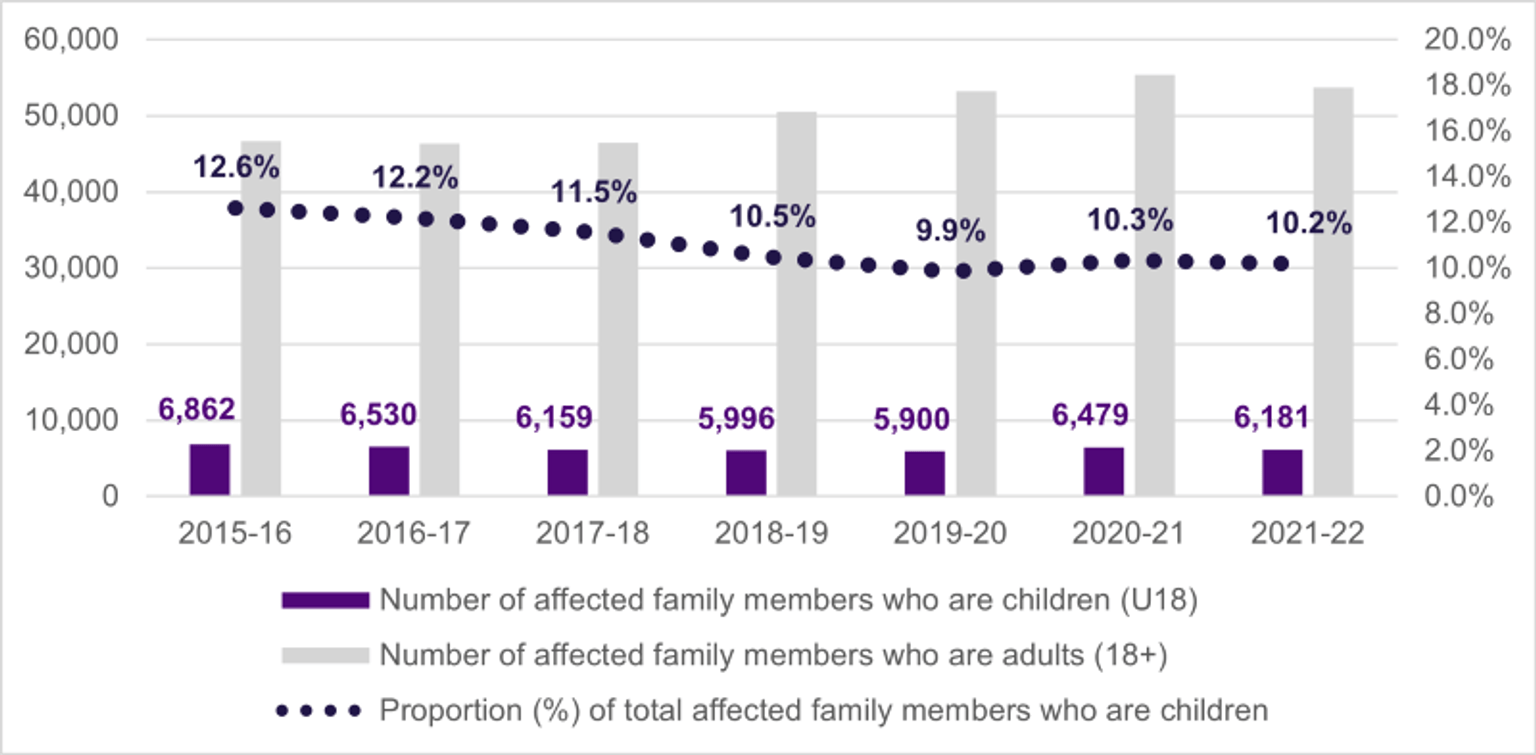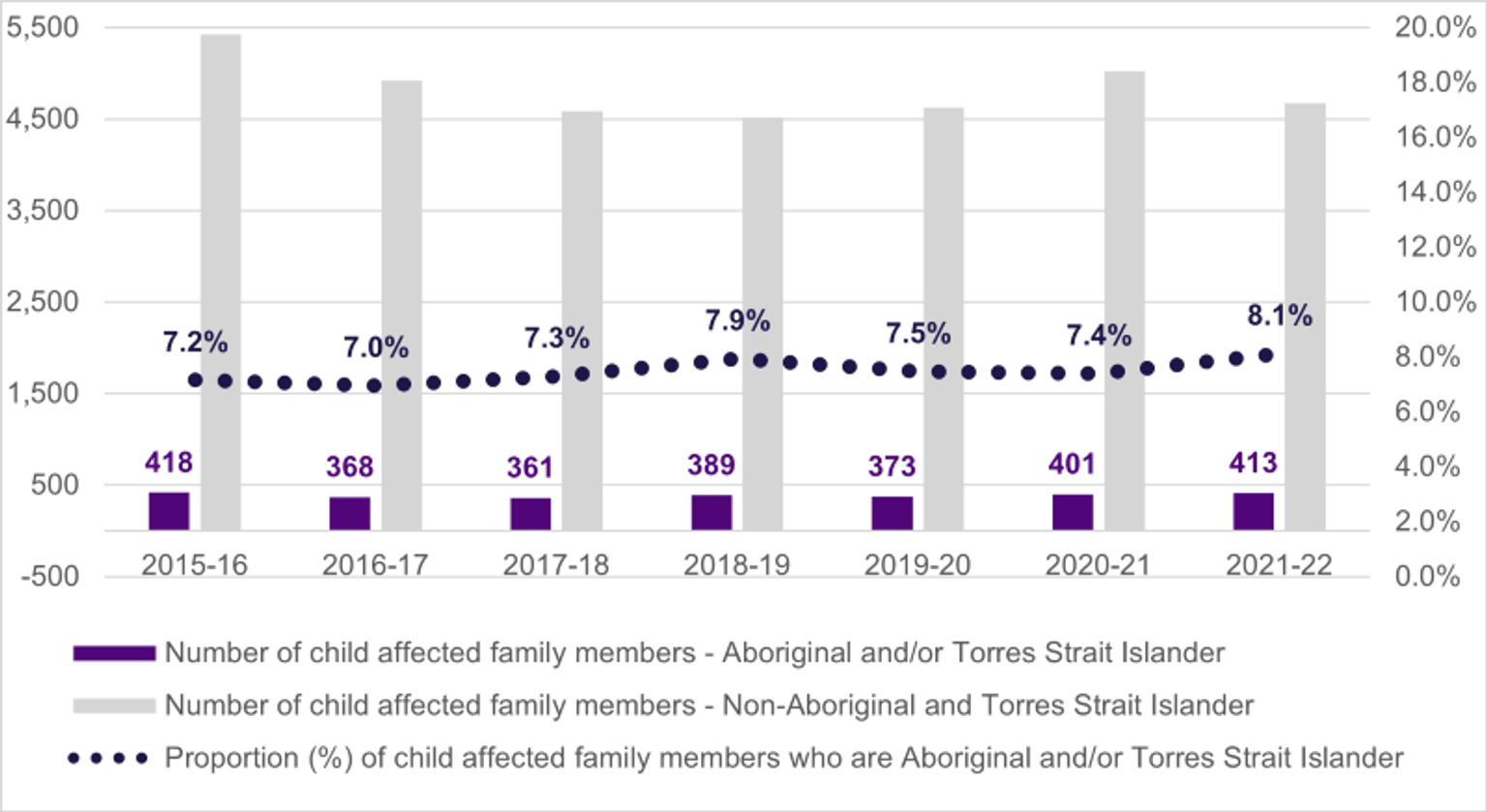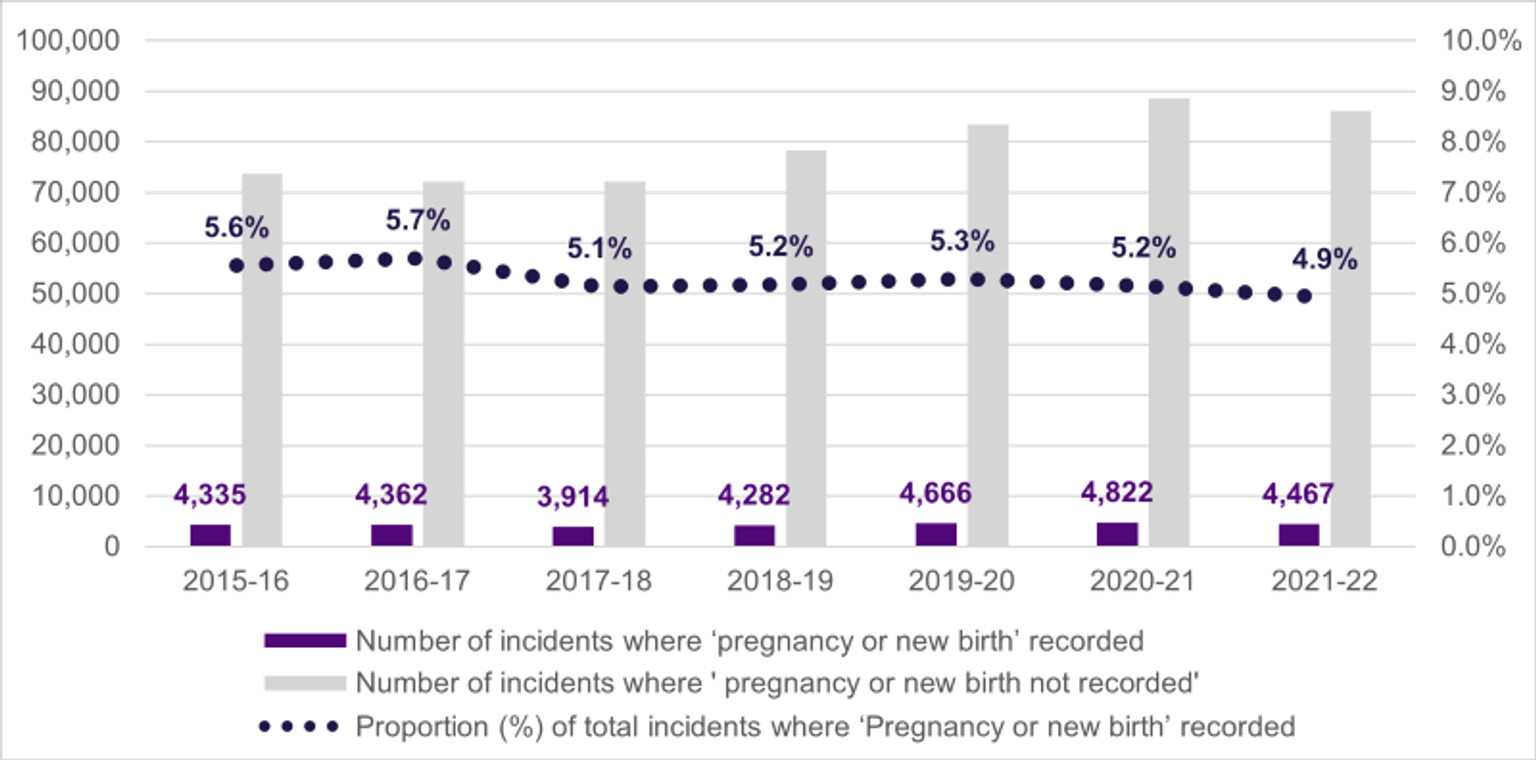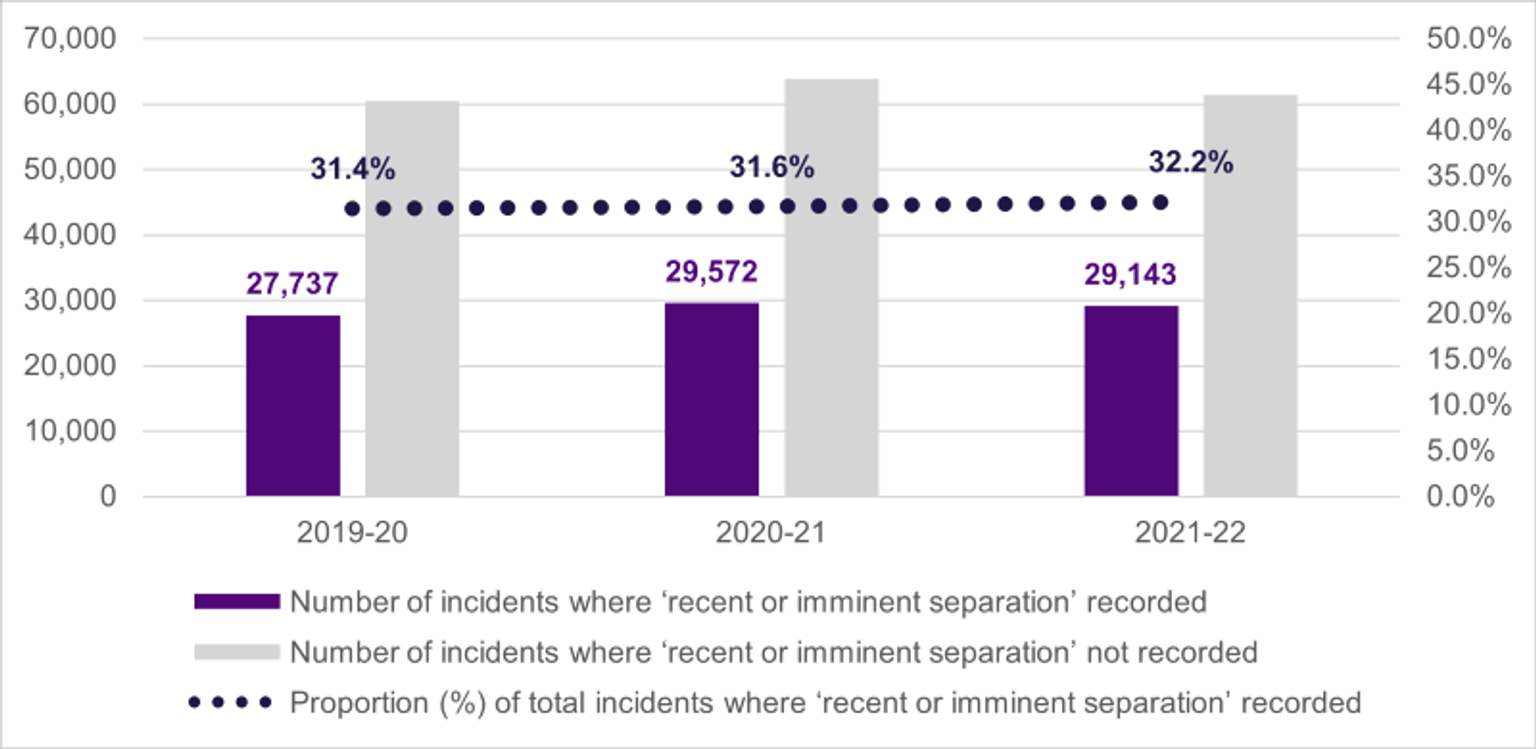Indicator: Reduction in children and young people who experience family violence
Victoria’s family violence reforms recognise children as victim survivors in their own right. Any exposure they may have to family violence, is considered as part of a family violence incident.
This violence has a profound effect on children. It can affect their physical and mental wellbeing, development, and schooling, and is the leading cause of children’s homelessness in Australia.1
Measure: Number/proportion of unique affected family members who are children
A total of 6,181 children were listed on family violence incident reports to police in 2021–22, representing just over 10 per cent of affected family members in police reports.
Generally, the percentage of children recorded as affected family members has been decreasing slightly each year since 2015.
Measure: Number/proportion of unique affected family members who are children – by Aboriginal status
Where Aboriginal status is known, 8.1 per cent of children recorded as affected family members in 2021–22 identified as Aboriginal and/or Torres Strait Islander.
Although the proportion of child affected family members who are Aboriginal has remained relatively stable, 8.1 per cent is the highest proportion since 2015–16. We will monitor this closely in 2023 to determine if a trend is emerging.
Aboriginal children are overrepresented as a cohort. The 2021 Census (Australian Bureau of Statistics) indicates Aboriginal and Torres Strait children make up 1.8 per cent of the total child population in Victoria (0–17 years old).
Indicator: Reduction in family violence among women who are pregnant or have a newborn
Family violence during pregnancy is a significant indicator of future harm to the woman and her children. Family violence often commences or intensifies during pregnancy. It is associated with increased rates of miscarriage, low birth weight, premature birth, foetal injury and foetal death.
Pregnancy and early parenthood are opportune times for early intervention, as women are more likely to have contact with health and other professionals.
Measure: Number/proportion of family violence incidents where ‘pregnancy or new birth’ is recorded
In 2021–22, there were 4,467 family violence incidents attended by Victoria Police where pregnancy or new birth was recorded as a risk factor. This equates to 4.9 per cent of total annual family violence incidents attended by Victoria Police.
Time series data shows the proportion of incidents where this risk factor is recorded has remained relatively stable over the past seven financial years (between 4 and 6 per cent). However, the 2021–22 level is the lowest it has been over these seven years.
Indicator: Reduction in level of risk for victim survivors immediately post-separation
High-risk periods for people experiencing family violence include when a victim survivor starts planning to leave, immediately prior to taking action, and during the initial stages of, or immediately after, separation.
It is common for perpetrators to continue, and often escalate, their violence after separation. This may be as an attempt to gain or reassert control over a victim survivor, or as punishment for leaving the relationship.
Measure: Number/proportion of family violence incidents where ‘recent or imminent separation’ is recorded
If a family violence incident involves current or former partners, police will record whether the couple recently separated.
In 2021–22, recent separation was recorded in one-third (32.2 per cent) of family violence incident reports.
The proportion of incidents where recent or imminent separation was recorded has remained stable since 2019–20 (between 31 and 32 per cent).
In 2019–20, Victoria Police introduced statewide changes to family violence recording practices through a new Risk Assessment and Risk Management report (L17). These changes to recording practices mean that it is not practical to compare data prior to 2019.
Footnotes
1 Campo M 2015, Children’s exposure to domestic and family violence: Key issues and responses, CFCA paper no. 36, Australian Institute of Family Studies, p. 5. https://aifs.gov.au/cfca/publications/childrens-exposure-domestic-and-f…
Updated



